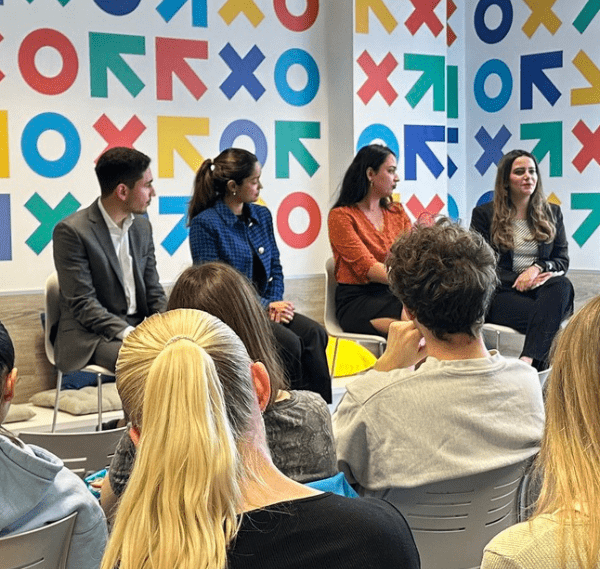When complaining about the mainstream media’s critical treatment of his presidency, Donald Trump coined the term “fake news.” Since then, this term has evolved to describe misinformation and propaganda in general, the likes of which we saw popularized in new and unexpected ways during the pandemic.
Unscientific, unproven theories about COVID-19 and its subsequent vaccination programs were shared around the world quickly and efficiently using new digital tools. This leads us to wonder how and why fake news spreads so quickly and what we can do to combat dangerous misinformation.
Read on to learn what fake news is, where you might find it in 2021 and what makes it such a threat. We’ve also included strategies to help you and your loved ones avoid falling victim to misinformation campaigns.
Defining Fake News
Fake news is a complex term to define because it means different things to different people. It may be used objectively to describe the spread of inaccurate information, or it could be used more cynically to discredit valid criticism. People of contrasting ideological standpoints are unlikely to agree on what constitutes fake news.
For this article, fake news will be used as a synonym for misinformation. Misinformation refers here to the spreading of false news stories. This is used for a variety of purposes: It could be a cheap strategy to attract online clicks and earn advertising money, or it could equally be a sincere attempt to politically manipulate the reader.
A distinction can be drawn between misinformation and disinformation. Misinformation refers to wrong information that is genuinely believed and disseminated in good faith in contrast to disinformation, which is the intentional use of false stories to influence the public.
As it is often difficult to determine the motivation behind specific examples of fake news, this article will use “misinformation” to cover both potential types.
How Does Misinformation Spread?
The rise of social media has totally transformed the media landscape, and in many ways, this has been a positive transformation. Traditional media can now be held accountable by the general public, and marginalized voices have access to platforms where they can share their unfiltered perspectives.
However, a downside of this transformation is that news spread on social media is not subject to the same veracity checks and standards of traditional media. This means that unverified stories can present themselves as credible and be disseminated very quickly to the general public.
One way fake news is commonly shared is via Facebook. The overwhelming amount of misinformation posted there over the last two years has led Mark Zuckerberg to add warning labels to any story that mentions COVID-19 and vaccinations. Anonymous forums like Reddit make it easy to spread conspiracy theories without accountability too.
Whatsapp, an instant messaging service that Facebook owns, has been identified as a particular source of misinformation. Anecdotal claims can be forwarded in a chain style, and because these stories come from trusted friends and family members, they are more likely to be accepted as truth. A warning stating “this has been forwarded many times” was introduced to the service as a result.
YouTube is another site where misinformation can easily spread. Studies have been undertaken regarding the potential for this platform to radicalize its audience. Thanks to the YouTube algorithm, someone who researches one conspiracy theory is then automatically directed to more and more videos on similar topics.
Lastly, influential figures like Donald Trump himself can very effectively share misinformation. He could be considered a “super-spreader” since he drew massive attention to the QAnon conspiracy theory by tacitly endorsing the movement in a public statement.

Examples of Fake News
In recent times, three major conspiracy theories have dominated social media and crossed over to make headlines in traditional media sources.
Pizzagate – This debunked fake news story alleged that influential political players in Washington DC, most notably Hilary Clinton, were involved in a sex trafficking ring exploiting children from the premises of a local pizza restaurant. It went viral during the 2016 presidential election, contributing to criticism of Hilary Clinton’s campaign.
QAnon – An even more extreme example than Pizzagate, QAnon claims that liberal celebrities such as Chrissy Teigen and John Legend are involved in a cannibalistic, paedophilic sex trafficking ring. As outrageous as it sounds, this theory has been successfully spread around the world thanks to online alt-right communities, leading to many in-person protests and a namecheck from Donald Trump himself.
Vaccine conspiracies – The belief that COVID-19 has been intentionally planted in the population to justify lockdowns and increased regulation began to gain popularity as the pandemic progressed and frustration increased. When vaccines were introduced, theories circulated that this was a scheme invented by technology kingpins such as Bill Gates to implant surveillance chips in the general public.
The Danger of Misinformation
Fake news about the vaccine contributes to attitudes of distrust towards health professionals. Vaccine uptake rates have been affected as a result, meaning that people who could have enjoyed a greater degree of protection against the virus have instead voluntarily chosen exposure.
Fake news can also have a political impact. It’s difficult to measure how much influence Pizzagate had over the voting behaviors of the American population in 2016; however, theories like Pizzagate that accuse politicians of heinous crimes have the potential to raise suspicions and reduce their support base.
Online communities dedicated to propagating fake news can become cult-like atmospheres, where believers are encouraged to disconnect from skeptical family members and commit themselves entirely to spreading and analyzing conspiracy theories. Sadly, vulnerable people may be especially susceptible to this type of manipulation.
3 Ways to Combat Misinformation
- Verify your source before you share: A quick Google search could reveal that an otherwise credible seeming news source is, in fact, a propaganda outlet for a specific cause. Unfortunately, fake news sites are getting better at presenting themselves as reputable newspapers.
- Build your critical literacy skills: think about what purpose and whose interests information might serve. Analyze the language used to assess whether it’s designed to be inflammatory or genuinely informative. Look for evidence that goes beyond anecdotes.
- Debunk with kindness: An aggressive approach to challenging fake news spreaders can cause them to feel defensive, further entrenching them in their misguided beliefs. Instead, share factual information that contradicts their claims in a supportive and sensitive way.










